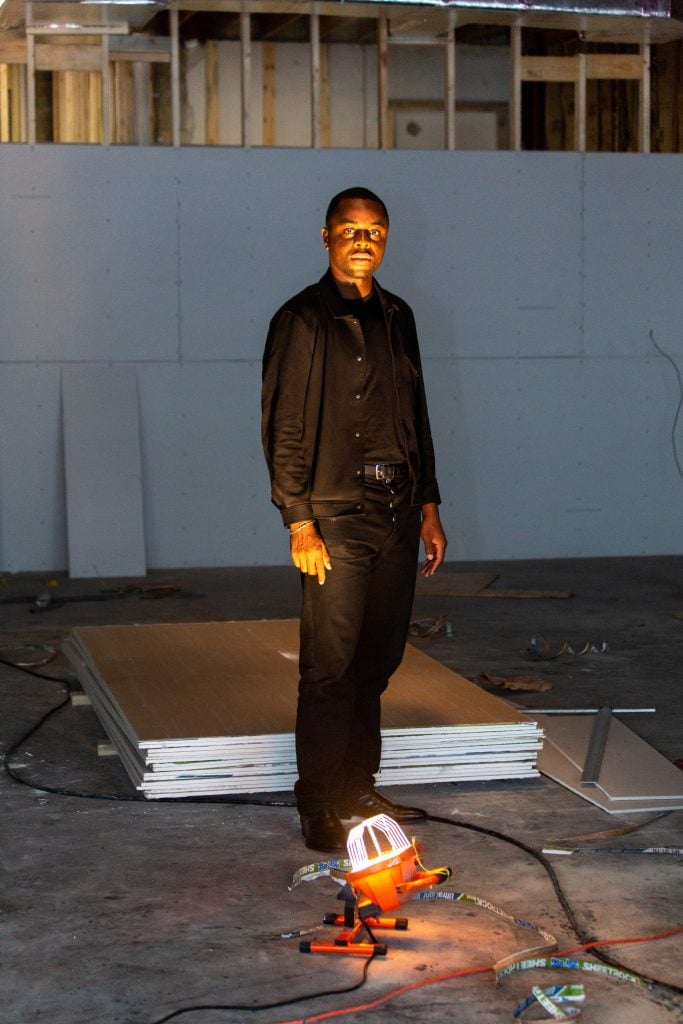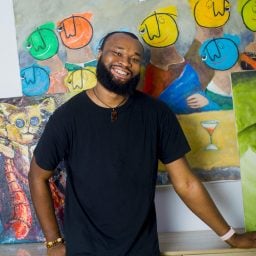Originally hailing from the Democratic Republic of the Congo, gallerist Gabriel Kilongo founded Jupiter in March 2022 in the Normandy Isles neighborhood of Miami Beach. Recognizing the evolving and expanding potential of the Miami art scene—including and beyond the annual, widely attended Art Basel Miami—the gallery focuses on fostering and promoting emerging artists and introducing their work to the international art world.
In close proximity to major institutions such as the Institute for Contemporary Art Miami, Rubell Museum, and Perez Art Museum, and situated near both the city’s art and design districts, the gallery is truly immersed in Miami’s vibrant and evolving arts community. With the aim of presenting nine exhibitions a year, comprised largely of solo shows highlighting new talent, has already established itself as a gallery to watch.
We caught up with Kilongo to learn more about what led up to the founding of Jupiter, and what visitors can expect next.
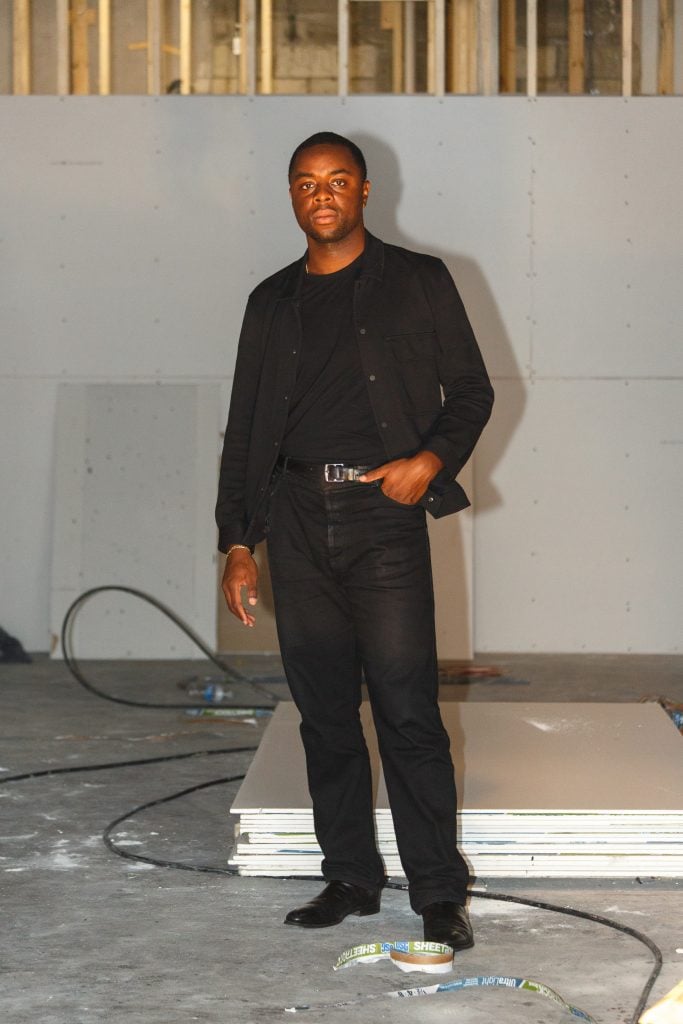
Gabriel Kilongo. Photo: Josh Aronson. Courtesy of Jupiter, Miami Beach.
Can you tell us about your journey leading up to founding Jupiter? When did you first become interested in the visual arts?
In a certain way, Jupiter is really the product and story of a person who truly never fit anywhere. After escaping the war-torn Democratic Republic of the Congo, my family and I moved to Israel in 2002, where we found shelter. For some of the people I met, I was the first black boy they had ever seen, let alone an African from the Congo. Soccer and art were my escapes and offered a sense of belonging. Then, with the help of Martin Peretz and Leon Botstein, I went to Bard College on a full scholarship to study art history. While there, I was introduced to many facets of the art world, and it immediately clicked. But I still had a deep interest in architecture and got to work for Frank Gehry, Rafael Viñoly, Moshe Safdie, and other firms. It wasn’t until an internship at the Metropolitan Museum of Art that I felt like I found my groove. That led to a short stint as an art advisor in L.A., then working as an assistant to Brice and Helen Marden in upstate New York before joining Mitchell-Innes and Nash and embarking on my own in 2022 to found Jupiter. Covid weirdly gave me a lot of clarity on how to pursue my passion.
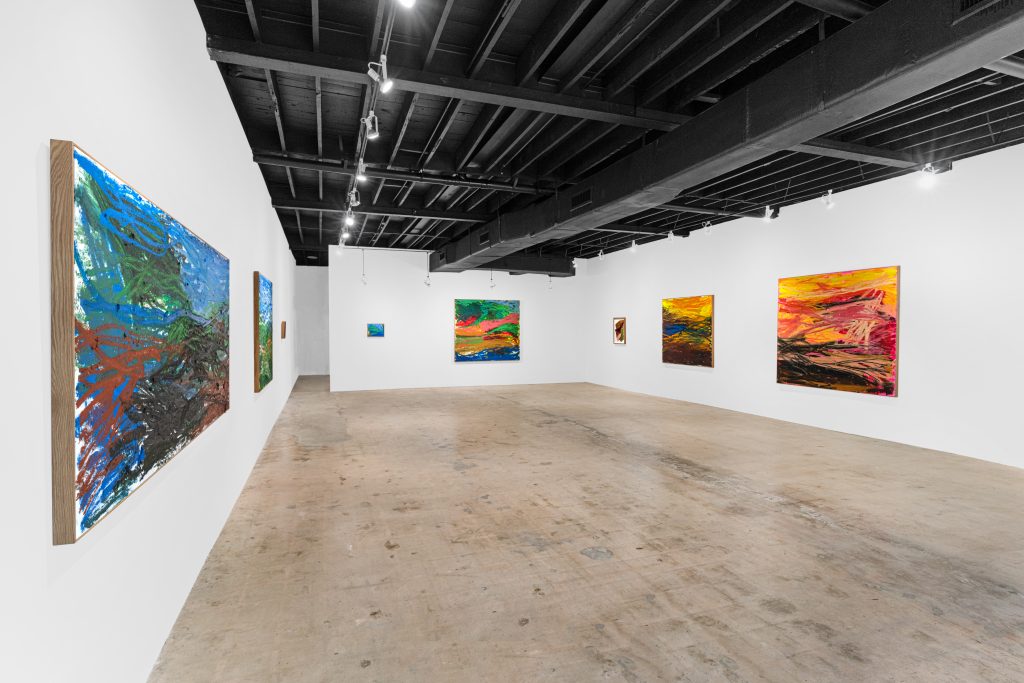
Installation view of “Paul Verdell: Trailing Away” (2023). Courtesy of the artist, Library Street Collective, and Jupiter, Miami Beach.
How would you describe the mission or ethos of the gallery? How is this reflected in the artists you represent?
Our focus is to identify, exhibit, and develop artists who are off-the-beaten-path, and offer a breath of fresh air to the discourse of the art industry. Yirui Jia is an excellent example. She is an artist who I was collecting myself even before Jupiter. Her work clearly stands out for a variety of reasons. Yirui excels at creating these fantastical worlds from her imagination that present characters in deconstructed narratives in realistic and otherworldly scenarios. Her frenetic techniques and storytelling method are usually supplemented with a touch of humor that is not so easy to achieve in a static, two-dimensional image—even though she makes it seem so.
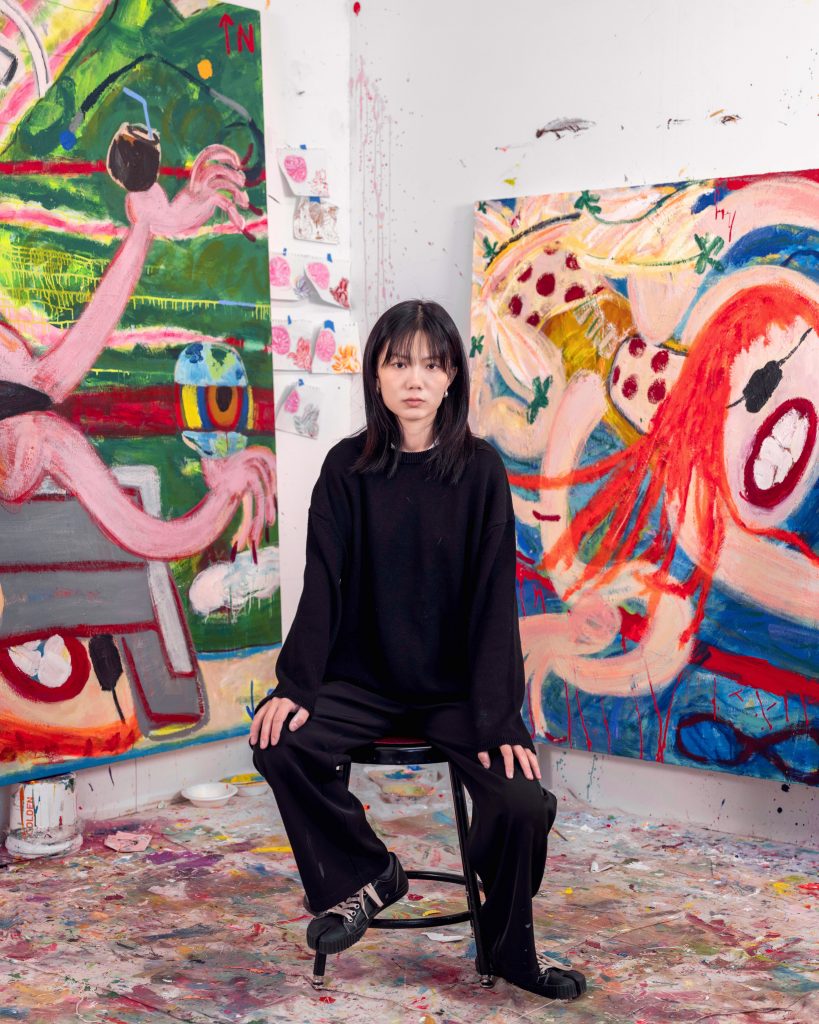
Yirui Jia in her studio, Brooklyn, New York. Photo: Garrett Carroll. Courtesy of the artist and Jupiter, Miami Beach.
Jupiter opened just over a year ago in March of 2022. In that time, what is one of the biggest lessons you’ve learned as a gallerist?
The biggest lesson I learned is to fearlessly trust your gut and stand for what you believe in. A substantial number of the artist we showed in the past year had their first solo shows at Jupiter. We have successfully placed works by artists—like Yirui for instance—in prominent collections, including those of some museum trustees. It’s always incredibly gratifying to see how her work holds up along other historical artists while still maintaining Yirui’s distinct and recognizable identity. We are incredibly grateful for the support and belief from clients and institutions we work with.
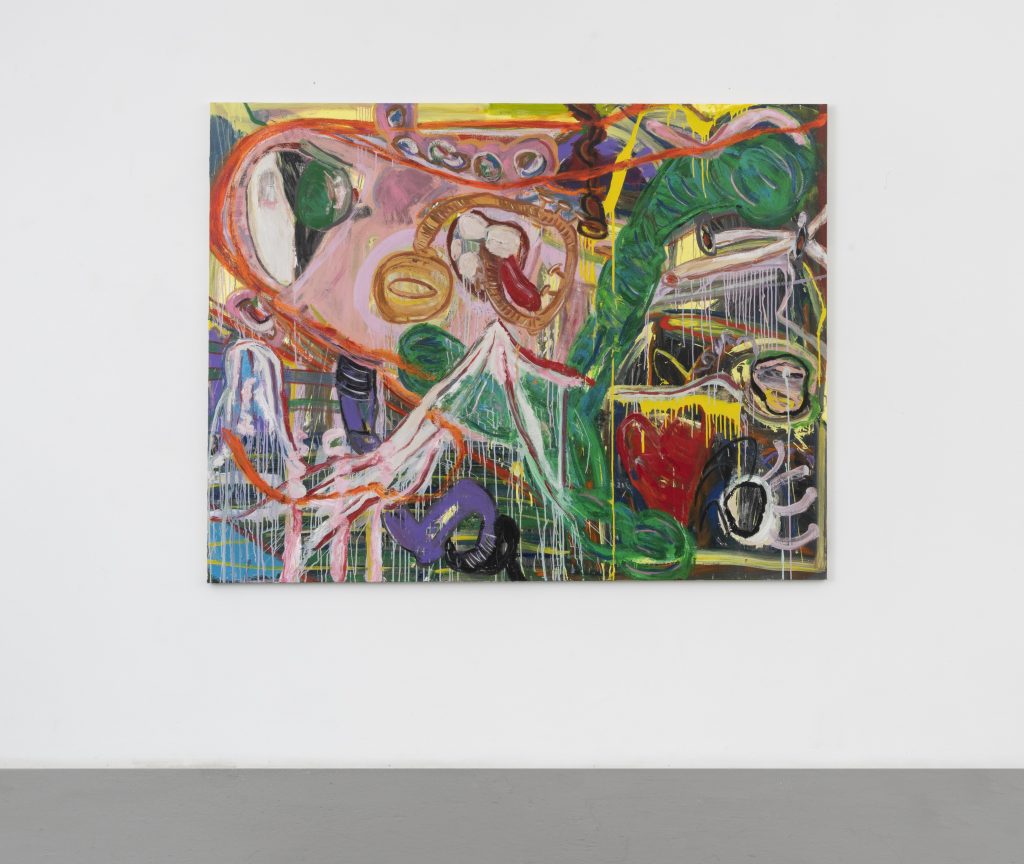
Yirui Jia, JOYLAND (2022). Courtesy of Jupiter, Miami Beach.
You’ve worked in both New York and Los Angeles but ultimately opened Jupiter in Miami Beach. What inspired this choice, and does the gallery’s location in Miami Beach affect or inform the gallery’s program?
It really happened organically. My dear friend Ely Latner was very encouraging about opening a space in Miami starting in 2018. After spending a lot of time here during the pandemic, I quickly understood where his advice came from. The fabric of this city makes it an ideal place for a young gallery with a mission like ours. First of all, the diversity and youthful energy of the program blend into those of the city. Everyone here is from somewhere that is not Miami. It is a thrill to witness and be part of the growth of Miami as it continues to establish itself a city of the future.
Jupiter recently participated in Expo Chicago and showed works by Yirui Jia. Can you tell us about the presentation?
The presentation was a great success. We established new relationships with collectors and institutions in the Midwest. In the works displayed at the booth, Yirui’s most recent paintings took a turn towards greater abstraction. This new body of work was still consistent with Yirui’s tendency to build upon her characteristic style that fuses a sense of an eccentric and comedic wit with play. Our goal was to showcase Yirui’s new fantastical worlds to a new audience and it was very strongly received. The responses were overwhelming in the best way possible.
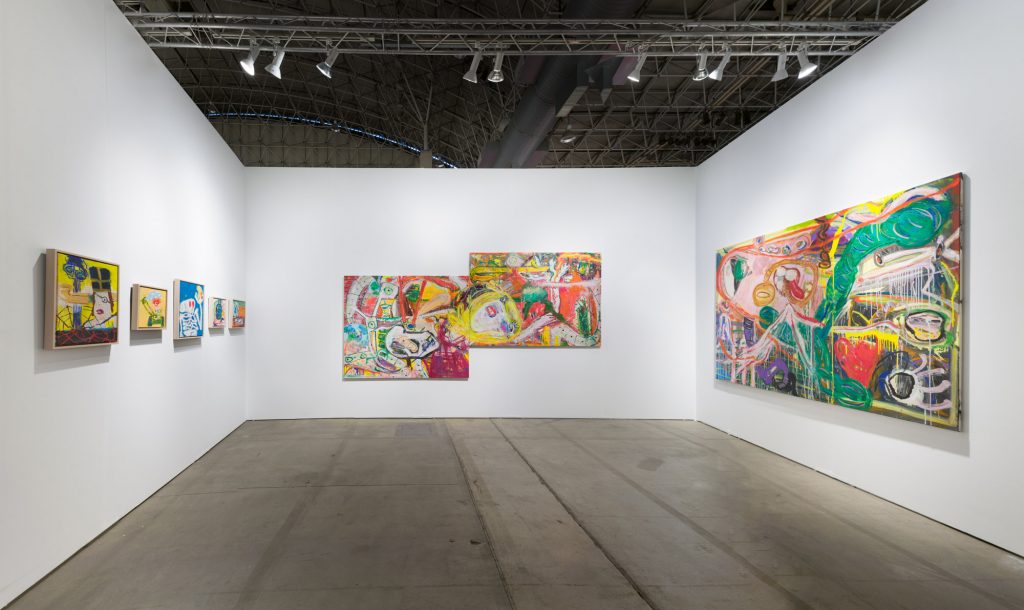
Installation view of Jupiter’s presentation of Yirui Jia’s work at Expo Chicago (2023). Courtesy of the artist and Jupiter, Miami Beach.
What is the next exhibition planned at the gallery?
We have a very exciting show of new work by Yongqi Tang. The show will feature painting, drawing, and sculpture that visually articulate the breadth of her practice and working process. Yongqi’s large-scale paintings are a byproduct of a procedure that involves exploring their subjects in different media. We are holding our breath for this show.
If you were not a gallerist, what would you be?
Building is incredibly gratifying to me, and I believe that life is about gratification. In a way, I approach being a gallerist as a builder. If I was not involved in building a gallery, then I would guess maybe it would’ve been skyscrapers, airplanes, cars, communities or a soccer team, something of that sort.
Learn more about Jupiter, Miami Beach, here.
